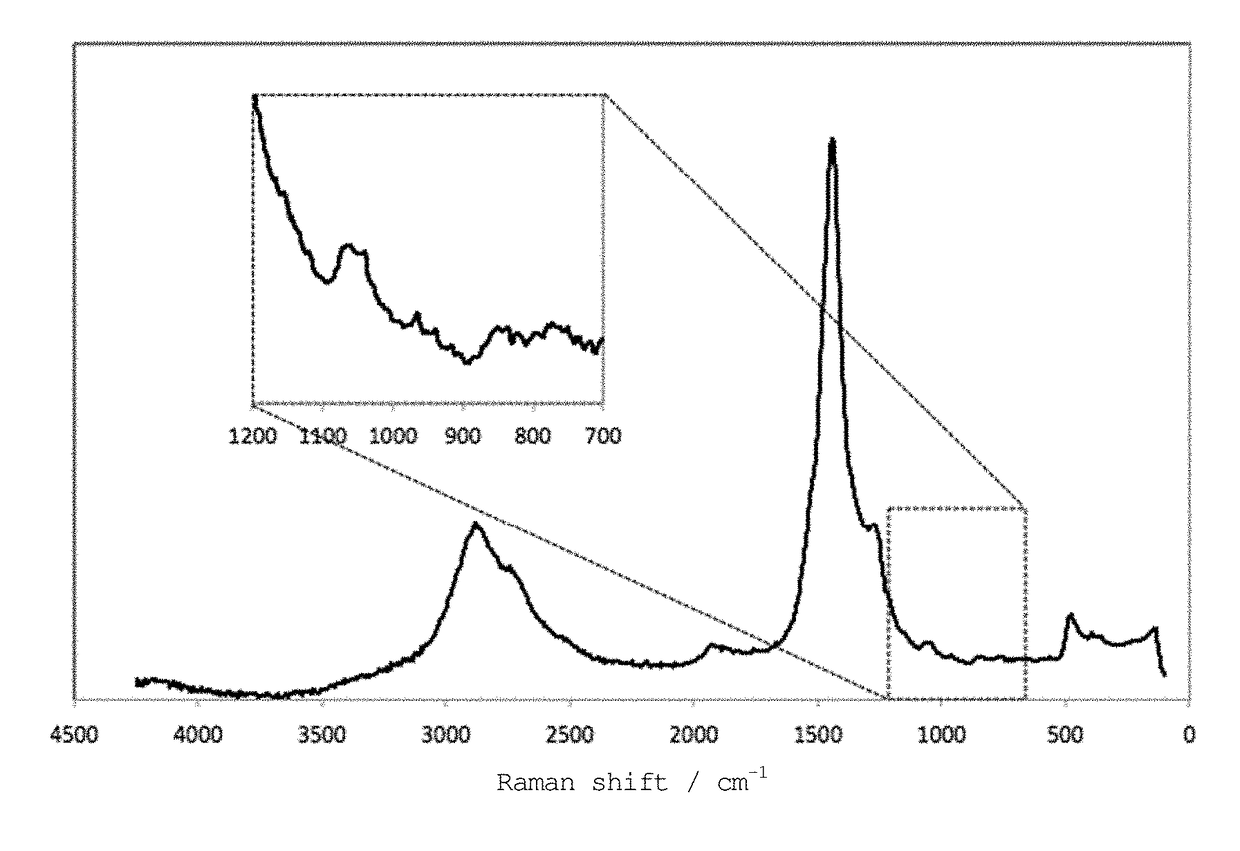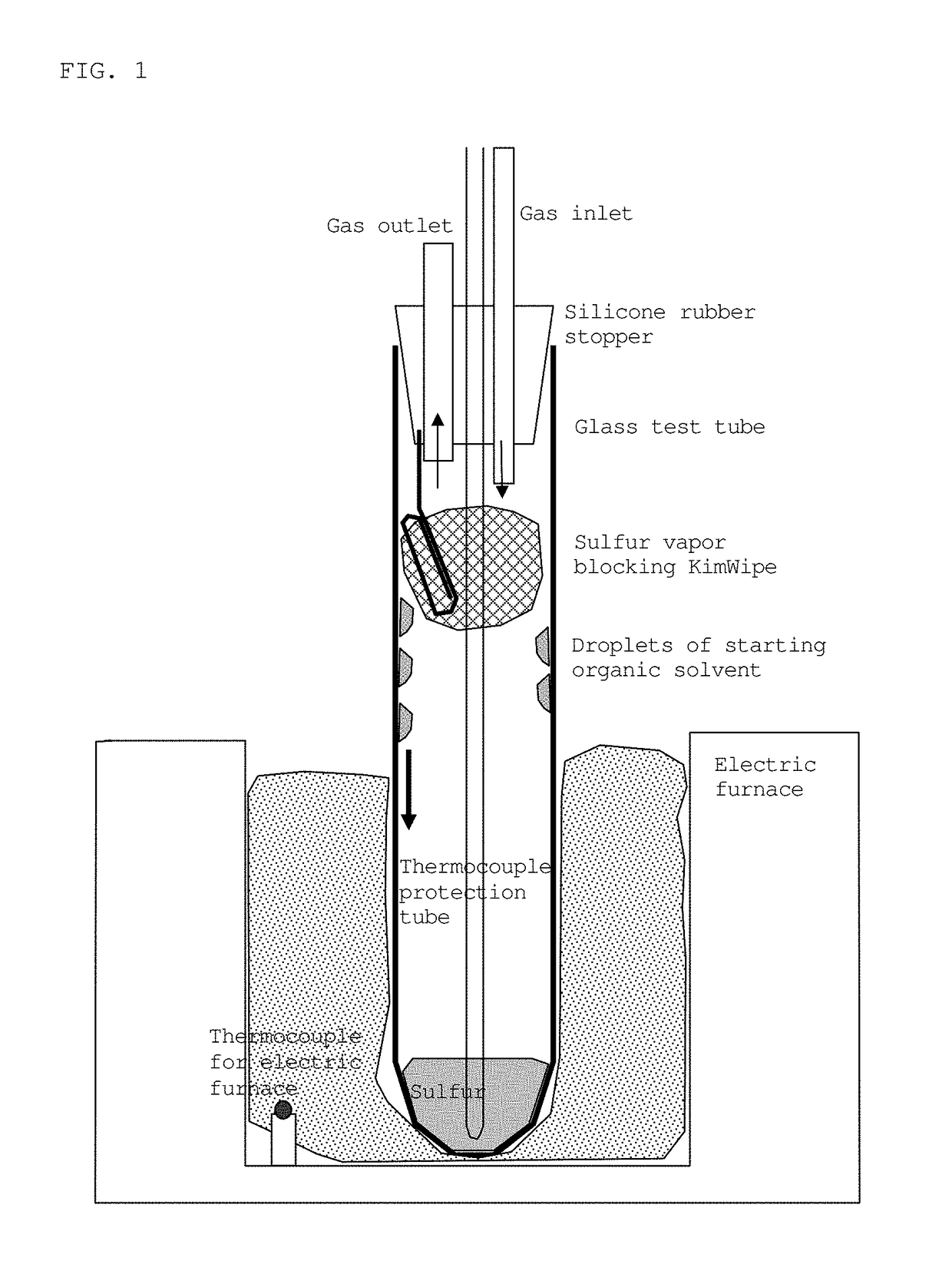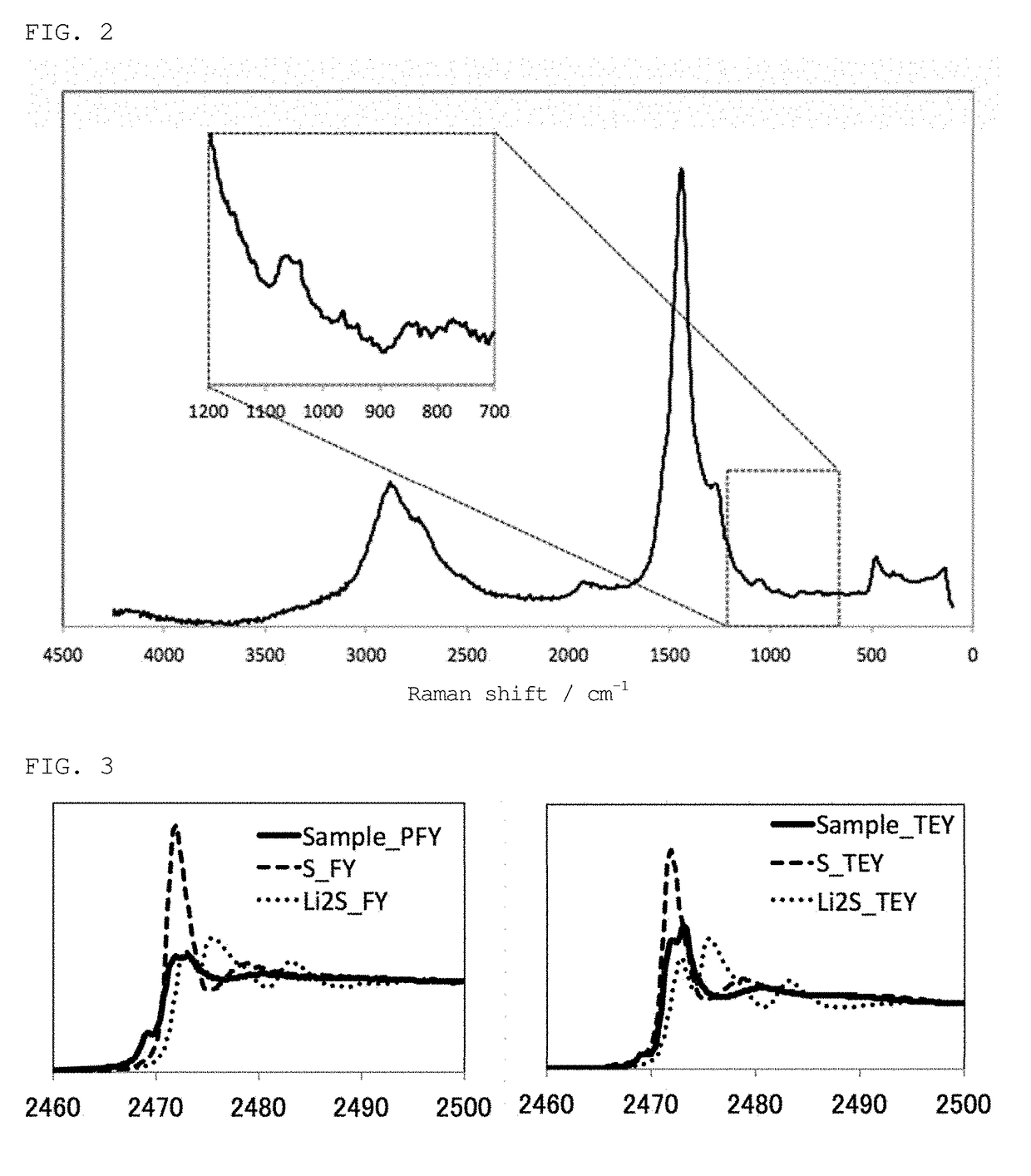Organic sulfur material and method for producing same
a technology of organic sulfur and secondary batteries, which is applied in the direction of carbon-sulfur compounds, sustainable manufacturing/processing, cell components, etc., can solve the problems of capacity reduction and lags of high-capacity cathodes for lithium-ion secondary batteries, and achieve excellent heat resistance, excellent charge-discharge characteristics, and high capacity
- Summary
- Abstract
- Description
- Claims
- Application Information
AI Technical Summary
Benefits of technology
Problems solved by technology
Method used
Image
Examples
example 1
Polyethylene Glycol 200
[0116]Sulfur (Kishida Chemical Co., Ltd., 99%) (5.1051 g) and 1.0256 g of polyethylene glycol (Kishida Chemical Co., Ltd., average molecular weight: 190 to 210) were placed in a test tube (produced by Maruemu Corporation, A-30, 30 mm (diameter)×200 mm (length)), and a silicone rubber stopper provided with a nitrogen gas inlet, a gas outlet, and an alumina protective tube (SSA-S, inner diameter: 2 mm, outer diameter: 4 mm, length: 230 mm) for inserting a thermocouple was attached (FIG. 1). The lower part of the test tube, 100 mm from the bottom, was placed in the heating portion of an electric furnace, a heat insulation material was inserted into the furnace to secure the test tube, and the upper part of the test tube was left exposed to open air. A thermocouple (type K) was inserted into the alumina protective tube, and the temperature of the sample was measured. Nitrogen gas was introduced at a rate of 50 mL per minute, and the exhaust gas was led to an Erlen...
example 2
Large Volume Synthesis of Polyethylene Glycol 200
[0124]The synthesis of Example 1 was scaled up. Specifically, 51.6 g of sulfur (Kishida Chemical Co., Ltd., 99%) and 25.0 g of polyethylene glycol (Kishida Chemical Co., Ltd., average molecular weight: 190 to 210) were placed in an alumina pipe (diameter: 60 mm×length: 400 mm), and a silicone rubber stopper provided with a nitrogen gas inlet, a gas outlet, and an alumina protective tube (SSA-S, inner diameter: 2 mm, outer diameter: 4 mm, length: 500 mm) for inserting a thermocouple was attached (FIG. 1). The lower part of the test tube, 100 mm from the bottom, was placed in the heating portion of an electric furnace, a heat insulation material was inserted into the furnace to secure the test tube, and the upper part of the test tube was left exposed to open air. A thermocouple (type K) was inserted into the alumina protective tube, and the temperature of the sample was measured. Nitrogen gas was introduced at a rate of 50 mL per minut...
example 3
Polyethylene Glycol 300
[0135]As in Example 1, 7.6441 g of sulfur and 3.0437 g of polyethylene glycol 300 (Kishida Chemical Co., Ltd., average molecular weight: 300) were placed in a test tube, and heating was performed in an electric furnace under nitrogen stream for 1 hour until the sample temperature reached 436° C. The obtained reaction product was put in a quartz boat, which was disposed inside a quartz tube to vaporize and remove sulfur under a flow of nitrogen at 300° C. for 2 hours. In this manner, 0.7263 g of black solid powder was obtained.
[0136]The thus obtained organic sulfur material was analyzed by Raman spectroscopy, XAFS spectroscopy, and TG-DTA, as in Example 1. The results were the same as those obtained in Example 1. Specifically, an organic sulfur material containing a component that has undergone carbonization and having excellent heat resistance was obtained, the material having carbon and sulfur interactions.
[0137]The charge and discharge test was conducted in ...
PUM
| Property | Measurement | Unit |
|---|---|---|
| temperature | aaaaa | aaaaa |
| temperature | aaaaa | aaaaa |
| particle size | aaaaa | aaaaa |
Abstract
Description
Claims
Application Information
 Login to View More
Login to View More - R&D
- Intellectual Property
- Life Sciences
- Materials
- Tech Scout
- Unparalleled Data Quality
- Higher Quality Content
- 60% Fewer Hallucinations
Browse by: Latest US Patents, China's latest patents, Technical Efficacy Thesaurus, Application Domain, Technology Topic, Popular Technical Reports.
© 2025 PatSnap. All rights reserved.Legal|Privacy policy|Modern Slavery Act Transparency Statement|Sitemap|About US| Contact US: help@patsnap.com



